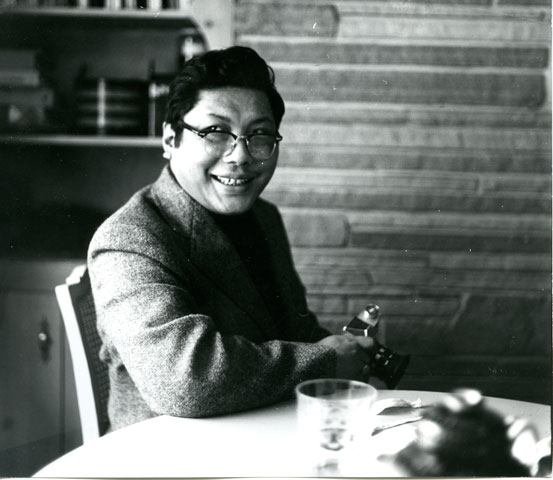In the time of the First Trungpa, there were few permanent monastic establishments. A lot of practitioners in the Kagyu lineage to which Chogyam Trungpa belonged didn’t want to settle down in one place, and they traveled in large encampments, or caravans. The Tibetan word for “encampment” is a gar.
This tent culture included many generations of the Karmapas, the heads of the Kagyu lineage. There is a story about the huge drum used by the Fifth Karmapa and his party in many ceremonies. It could be taken apart in sections and loaded onto a mule or a yak, whatever they had. Whenever they encamped, the drum could be put back together, and the skin could be stretched overnight.
It was possible to set up a magnificent capital, a temporary modern city, right on the spot. They set up residence tents as well as the main meditation hall where ceremonies were conducted. Then the next day, they would pack up the whole thing and move on. Everything was adapted for the traveling group situation, which was based on ideas borrowed from Genghis Khan and Mongolian culture.Apart from the Romans, in the West we find very little tent culture. The Tibetan tent culture, however, was prominent and became powerfully important. This tent culture may have influenced the Chinese court and the Chinese military culture.
The age of encampment in Tibetan monasticism extended from the fourteenth century into the late sixteenth century. It’s a fantastic concept. Interestingly, this provided possibilities of establishing complete splendor in one night. The next day, the whole thing could be disassembled, and the people could continue on their journey. That tradition was extraordinarily powerful and wondrous at the same time for a lot of people.The camps were constantly moving. Villagers would wake up in the morning and go out to take their herds into the mountains. They would look down into the next valley and find a whole huge monastery encamped there. The villagers would be hoping that the camp would be there for a long time. Then the next day when they woke up, the camp was gone. All that was left were the rocks that were used in the stoves. Or there might be little dying fires, horse dung, mule dung, or whatever.
That type of monastery was able to travel to a lot of areas. Each day in each place, you could see full-fledged, real monasticism actually taking place. In this case, the full splendor, wealth, and dignity were manifested. It was real, doing the whole thing 100 percent.
It’s interesting that we haven’t developed that kind of tent culture in America at all. The way to reduce pollution and save ourselves from urbanization might be to have a fantastic magnificent dharma tent culture. You could establish the whole encampment at once, on the spot, with all its splendor. The organization could fulfill its duties wherever it goes. The administration would have a chance to relate with each locality as well, and then fold everything up and move somewhere else. That is a very heroic and very Buddhistic approach: nothing is particularly permanent, but you keep on moving all the time.
The First Trungpa’s encampment turned out to be very successful. It was a fantastic display of how you can actually handle life, not leaving too much mess except for the little dying fires that you leave behind when you break camp. This was a work of immense vision. These people were quite aware that eventually they would have to settle down in one particular place. At the same time, they were interested in and open to the tent culture of Tibet of that age, that time in history.
From The Mishap Lineage:Transforming Confusion into Wisdom, pages 32 to 35. Published by Shambhala Publications.
